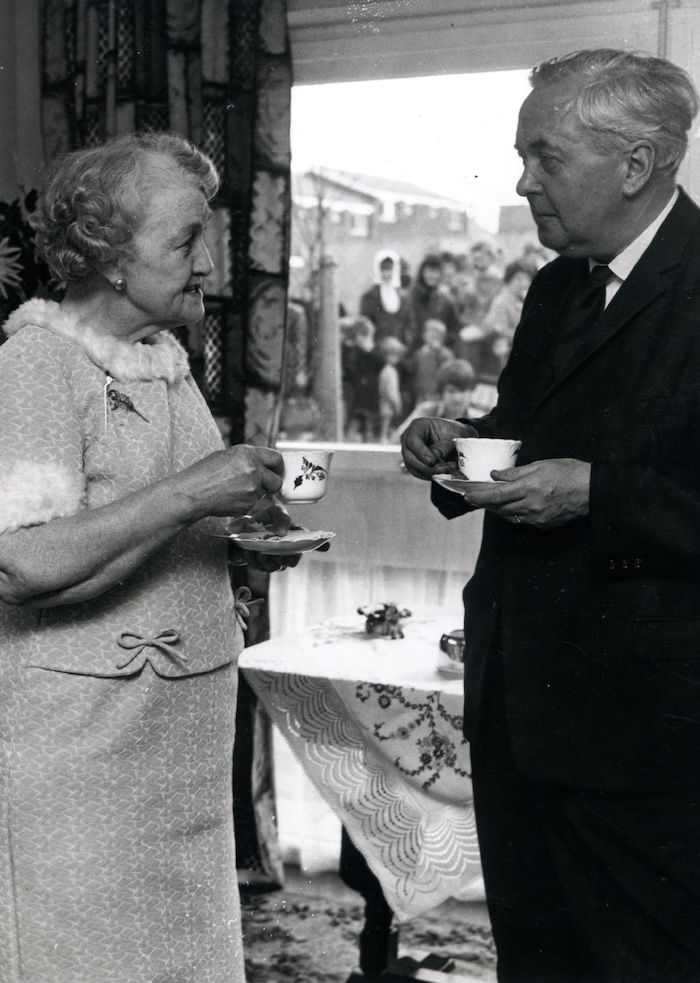The Problem with Britain’s Pensions
How to finance old age has been a problem since the inception of Britain’s welfare state. Why is pension reform so difficult?

In May 2025 Keir Starmer, a prime minister with one of the largest majorities in history, backtracked on proposals to means-test the winter fuel allowance which has been paid to pensioners every year since 1997. There was a good case for the reform. Public finances are strained and, in the absence of rapid economic growth or tax hikes on working-age people, the government needed to make cuts somewhere. Surely some of the best-off people in society, when incomes are adjusted for housing costs, could accept the government did not need to contribute to their heating bills? Yet pensioners – almost 20 per cent of the population – as well as a majority of the general public, according to YouGov polling, would not. British politics seems incapable of confronting one of its biggest challenges. Such concerns are nothing new. Financing old age has been the most significant problem for the welfare state since its inception.
This much was clear in 1942. The economist William Beveridge, who had been commissioned to write a report that is now viewed as the blueprint for the modern welfare state, warned MPs that improving the existing state pension scheme, which provided pensions for men who had worked insured occupations and their wives after the age of 65, and for everyone over 70, was going to require some difficult choices. Beveridge recommended introducing a new universal pension scheme for over-65s, which would start at a low rate and increase gradually over the course of 20 years as workers built a surplus of contributions that would pay for their retirement. Jim Griffiths, Labour’s Minister of National Insurance, thought differently. ‘The men and women who had already retired had experienced a tough life’, he argued. ‘In their youth they had been caught by the 1914 war, in middle age they had experienced the indignities of the depression, and in 1940 had stood firm as a rock in the nation’s hour of trial. They ... should not wait for twenty years.’ Full pensions were paid immediately but, given the cost implications, they were set below subsistence level.
Caught in a trap
A welfare state that included such a meagre benefit was a key feature of the decades after 1945. It was generally believed that poverty only existed in a small number of exceptional circumstances because the postwar social security system prevented it from being more widespread. Yet it was notable that politicians of all stripes were prepared to concede that pensioners were not among those who ‘had never had it so good’, as the Conservative prime minister Harold Macmillan put it in the late 1950s. The reason for pensioners’ difficulties was fairly clear. Britain was home to more old people, both relatively and absolutely, than ever before, with the proportion of men over the age of 65 and women over the age of 60 rising from 6.2 per cent to 13.5 per cent of the population during the first half of the century; 1.4 million more were expected to be claiming pensions by the end of the 1950s than when the scheme started a decade earlier. The Treasury wanted to keep costs down but the result satisfied nobody. An increasing number of pensioners were so poor that they had to go cap in hand to the National Assistance Board (NAB), the body that distributed means-tested benefits to people who fell between the cracks of the National Insurance scheme; two-thirds of the NAB’s more than 1.5 million claimants were pensioners by the late 1950s. But many also wondered if the state pension scheme was too expensive to sustain. Sir Thomas Phillips, whom the Conservatives appointed to chair the Committee on the Economic and Financial Problems of the Provision for Old Age in 1952, thought it was impossible to calculate a pension that was sufficient to live on and palatable to the Treasury. He argued that the retirement age should be put back up to 70 to bring down costs.
Politicians were trapped. Phillips’ recommendation would lead to electoral consequences no government wanted. But how to get more money into the system? An important part of Beveridge’s appeal was egalitarianism: everyone paid the same flat-rate contributions and was entitled to the same benefits. The consequence, however, was that everything was tethered to what the lowest paid workers could afford. Politicians therefore fell back on encouraging the growth of occupational pensions to compensate for the state system’s failures. Yet this would create, as Richard Titmuss, a pioneering social policy scholar, put it in the mid-1950s, ‘two nations in old age’: those with access to an occupational or private pension, who were able to live a comfortable life, and those reliant on the state pension, which everyone knew was insufficient.

Half pay
An influential group within Labour, now in opposition having lost power in 1951, thought their party’s fortunes, as well as the country’s, were dependent on modernisation of the welfare state. The likes of Richard Crossman, a member of the party’s ruling National Executive Committee who held a social services brief, drew on academics, many from the London School of Economics, to design radical new policies. In 1957 Labour announced ‘National Superannuation’: an earnings-related pension scheme that required contributions proportional to income and paid out benefits based on lifetime earnings. Subtle mechanisms of redistribution would make the poorest pensioners better off. Labour marketed the scheme as delivering ‘half pay on retirement’ and printed 52,000 copies of a pamphlet outlining it, which sold out within a year.
Nothing approaching this dream became a reality, though. One reason was the precedent that the policy might set. Few politicians had the stomach for a complete overhaul of social security on earnings related lines, which they thought would be called for if anything like National Superannuation were implemented. Of more importance, however, were the ideological leanings of the Conservative governments of the 1950s. Against any further expansion of the welfare state and concerned about the implications for the private pension industry, whose services they preferred, the Tories seized gleefully on a number of small errors in Labour’s calculations, such as including income raised from contributions from Northern Ireland but not pensions that would then be paid out there. Nevertheless, the electoral appeal of Labour’s proposals was obvious, leading the Tories to immediately announce their own earnings-related addition to the state pension, albeit one that was the palest of pale imitations, in which the value of extra entitlements failed to keep pace with inflation, illustrating that the intention was to raise more money, rather than improve benefits.
Labour certainly intended to address the worst elements of state provision for old age when Harold Wilson made it to Downing Street in 1964. But anything other than incremental improvements to existing benefits slipped down the agenda quickly. A very distant relative of National Superannuation, the State Earnings Related Pension Scheme was finally adopted in the late 1970s. The fact it was a heavily watered down version of proposals that had been around for 20 years only underlined that genuinely far-reaching reform was often out of reach for Labour and Conservatives alike.
Overhaul
There has never been one reason for the failure to pursue ambitious ideas in these areas; poor policy design, political expediency, and an inability to elevate goals other than cost-saving have all played their part. Perhaps the most important issue, though, is that problems have not remained static. If the five decades after the Second World War were dominated by a failure to meet pensioners’ needs, the next 20 years saw politicians fail to face up to the fact that significantly improving the generosity of state support for old age, without addressing the underlying mechanisms that paid for it, was consuming unsustainable levels of resources. The apex of this problem is the ‘triple lock’, which guarantees the state pension increases each year by the highest of inflation, average annual earnings, or 2 per cent. Pensioner poverty is still a serious problem, but when Gordon Brown, the Labour chancellor of the exchequer, introduced the winter fuel allowance in 1997, pensioners were the poorest demographic in Britain; 25 years later they are among the richest.
Does history contain any lessons for thinking about the trouble with reforming the welfare state or, indeed, implementing change elsewhere? The path dependency inherent in political decision making is clearly important. Although we are a long way from the 1940s, our current arrangements are a clear descendant of Beveridge’s plan, not least in many pensioners’ continuing reference to having ‘paid in’ during their working lives. In this respect, as Andrew Marr recently observed, the state pension is pretty much the only part of our social security system that maintains a link with the old contributory principle, meaning few politicians are prepared, or have the political capital required, to overhaul it.
We might also infer that certain conditions are required for substantial reform. Given that Beveridge’s major concern in 1942 was to enrol everyone in what were believed to be the best existing state schemes, the extent of change after the Second World War is often overstated. Yet the war did make some decisions much easier because, in the context of shared sacrifice, arguments about the importance of providing for everyone in old age were much more compelling than concerns about the cost implications of doing so. Even this observation has its limits, though. What dramatic change did the Covid-19 pandemic – an event as disruptive as war – produce? Perhaps the only hope for reformers is that it is still to come.
Chris Renwick is Professor of History at the University of York.






